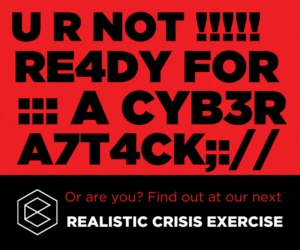BCI 日本支部 2019 年度第 4 回定例会(webinar) 開催報告

BCI 日本支部は、2020 年 3 月 13 日に2019 年度第 4 回目の定例会を開催しました。
なお、当初は 3 月 2 日に東京にて会合を実施する予定でしたが、新型コロナウィルスの感染拡大防止の観点から、13 日の webinar のみの開催となりました。
BCI Japan Chapter held the third regular meeting at 13 Mar. 2020 on webinar.
We have also planned to hold a meeting at 2 Mar. at Tokyo, but it was cancelled to avoid spreading infection of COVID-19.
今回は、まず日本支部事務局の田代から、BCM における演習の実施に関するノウハウについて、Good Practice Guidelines 2018 年版に基づいて説明されたあと、参加者との質疑応答や、参加者同士のノウハウ共有のための時間が設けられました。
A lecture of practical knowledge and tips for exercising on BCM was delivered by Kuniyuki Tashiro FBCI, based on the Good Practice Guidelines 2018 edition, then the time slot for Q&A and discussion was set.
説明の要点は以下のとおりです;
The followings are the points of the lecture;
日本では「演習」と「訓練」という 2 つの用語が混同されることが多いため、まず最初にこれらの用語の区別について説明がありました。原則として「演習」は事業継続計画や対策の有効性を確認するために行われるものであり、一方で「訓練」は従業員を教育し、スキルを向上させるために行われるものです。したがって「演習」は GPG では PP6 に書かれ、「訓練」は PP2 に書かれています。
At the first part of the lecture, the difference between "exercise" and "training" was explained because these terms are not distinguished well in Japanese industry. Basically exercise is done to check and evaluate business continuity availability, and training is done to educate staff and improve their skills. So exercise is written in PP6 of GPG and training is in PP2.
PP6 における、演習に関連する内容は、「演習プログラムの開発」と「演習の開発」の 2 つに分かれています。演習プログラムは、全ての計画、全ての事業継続ソリューション、計画に含まれる全ての情報、全ての関係者が確認されるよう複数の演習によって構成されます。演習プログラムは様々な種類の演習を含みます。
The contents related to exercise in PP6 is divided to two part; "Developing an Exercise Programme" and " Developing an Exercise". Exercise program consist of some exercises to cover all of plans, solutions, information, and personnel. An exercise program might contain various types of exercise.
演習を開発する際には、「リアルさ」、「リスクマネジメント」、「費用対効果」に留意する必要があります。「リアルさ」には、リアルなシナリオを作ることと、可能な限り現実と同じ手法や手順を演習で実行することの両方が含まれます。「リスクマネジメント」は現実の業務の妨げにならないようにすることです。「費用対効果」は常に演習の目的・目標に基づいて考慮される必要があります。
For developing exercise, there are three points to keep in mind; "realism", "managing risks", and "costs and benefits". "Realism" means both creating real scenario and perform methods/procedures as real as possible. "Managing risks" is how to avoid disruption of real business. And "costs and benefits" should be considered always based on the objectives of the exercise.
演習を実施したら、適切な方法で振り返りを行い、演習報告書として記録する必要があります。演習報告書に書かれた成果は事業継続プログラムのレビューに用いられるべきです。
Every exercise must be debriefed with proper debriefing method and recorded as the post-exercise report. The findings on the post-exercise report should be used for review process of business continuity programme.
以上の説明のあと、多くの質疑応答や議論が行われました。以下は当日行われた質問(Q)、それに対する回答(A)、および経験や教訓の共有(S)の要約です。
After the lecture above, many Q&A and discussion was made. The followings are the summary of [Q] questions, [A] answer, and [S] sharing experience and lesson learned.
Q) 演習プログラムを具体的にどのように組み立て、その中で各演習をどのように位置づければ良いのでしょうか?
Q) Could you tell me the detail how to develop exercise programme?
A) 演習プログラムをどのように作るべきか、ということについて、GPG にあまり具体的な記述はありませんので、経験に基づいて説明させていただきますと、GPG に書かれているように、「全ての計画、全ての事業継続ソリューション、計画に含まれる全ての情報、全ての関係者」をカバーするためには、主に「Discussion-based exercises」や「Scenario exercises」のような手法を使って、小規模な演習を多数実施し、それらの集大成として大規模な演習を行う、という形にする必要があります。
A) GPG does not explain for detail of how to develop exercise programme, however from my experience, it would be necessary to contain many small exercises to verify "all plans", "all business continuity solutions", "all information contained in plans", and "all relevant personnel" as written in the GPG, then perform large exercise as all over validation.
S) BCI を通して海外の多くの BCM 関係者(専門家や実務者)から聞いた限りでは、彼らも小規模な演習を多数行う組織が多いようです。大規模な演習しか行ったことが無い方にとっては、本当にこれでいいのか?と思われるくらい、シンプルな方法で演習を行うこともあります。
S) Many BCM practitioners in the BCI said that they perform small exercises often. In some cases, they perform very simple exercise which might be difficult to imagine for the people who have experience of large scale exercise only.
S) 例えば、「夜間に緊急事態が発生した場合には会社に参集して対策本部を設置する」という手順が決められた組織であれば、実際に夜間に社屋に来て建物を解錠し、所定の会議室に来てみるだけでも、演習として成立する。もしその際に、鍵の開け方が分からなかった、などの問題が発見できれば、それらが演習の成果となる。
S) If the organization have a plan to establish command post in the head office for any incidents at night, it would be valuable exercise to come to the office at night, open the key, and get into the designated room. If any problem (e.g., nobody knows how to open it) were found, it would be great output even the exercise was very simple.
Q) 社内で大きな影響力を持つ人に、大規模な Live Exercise をやらないと意味がないと思われているのですが、どうすればよいでしょうか?
Q) Senior manager believes that the exercise must be large scale live exercise and no value for small exercise. How should I convince him?
A) 演習の目的や、演習からどのような成果を期待するか、演習の費用対効果、などの観点から議論してみてはいかがでしょうか。
A) It might be effective to discuss from some viewpoints like as the objectives of exercise, expected result, costs and benefits.
S) 大規模な演習は社内外への PR にも使えるので、演習の様子を写真やビデオで記録していただき、事業継続に関して積極的に取り組んでいることを、社内への周知や対外的なデモンストレーションに活用すると良いでしょう。
S) Large scale exercise would be useful to demonstrate the organization’s activity for business continuity is done. So it should be recorded as photo and movie, then used for raising awareness of the employees and explanation for external parties.
S) シナリオや付与状況の内容に関しては、GPG に書かれてるとおり、ある程度のリアルさは必要で、あまりに現実からかけ離れた状況を付与すると、演習参加者の緊張感が途切れる場合があります。ただし、リアルさだけを重視しすぎると、無難な演習になってしまう可能性もあるので、発生する可能性が非常に低そうな事を、ある程度加えたほうが良い場合もあります。多少はリアリティを欠くような付与状況をあえて加えることによって、参加者の視野が広がる場合もあります。
S) As written in the GPG, realism of scenario and injects is important. Lack of realism might lead attendee's concentration lower. However if the scenario were too realistic, it might be boring with less outcome. So it would be recommended to use rare events as injects sometimes to make attendee's eyes open wider.
S) 演習の目的・目標を明確にすることが難しい場合がありますが、これを明確にしておかないと、せっかく手間や時間をかけて演習を準備し、実施しても、演習終了後に有意義な成果が得られにくくなり、関係者の不満を招く場合があります。したがって、演習の企画段階である程度時間をかけてでも、これをしっかり議論すべきです。
S) It might be difficult to define objects of an exercise, but enough time should be taken to discuss it at the early stage of developing exercise, otherwise the outcome would be unclear, and attendees and staffs might feel frustrated for their time and efforts they have spent.
S) 演習報告書を作成するときに、演習の目的・目標に対して、どのような結果(成果)が得られたかをセットにして書くようにすると、演習の成果が分かりやすくなります。
S) In writing post-exercise report, it is recommended to write the outcomes per the objectives to make the relationship among them clear.
S) 演習の参加者とは別に「観察者」を決めて、演習の状況を記録してもらい、振り返りの際に観察者からフィードバックを受けるようにすると、参加者とは別の視点からの振り返りができます。その場合は観察者に演習の目的・目標をしっかり伝え、どのような観点で観察してほしいかを具体的に指示することが重要です。
S) Arranging to assign observer might provide more feedback from different points of view from the attendees. For effective observation, it is important to share the objectives of the exercise, and provide concrete direction about what should be observed and recorded.
以上

